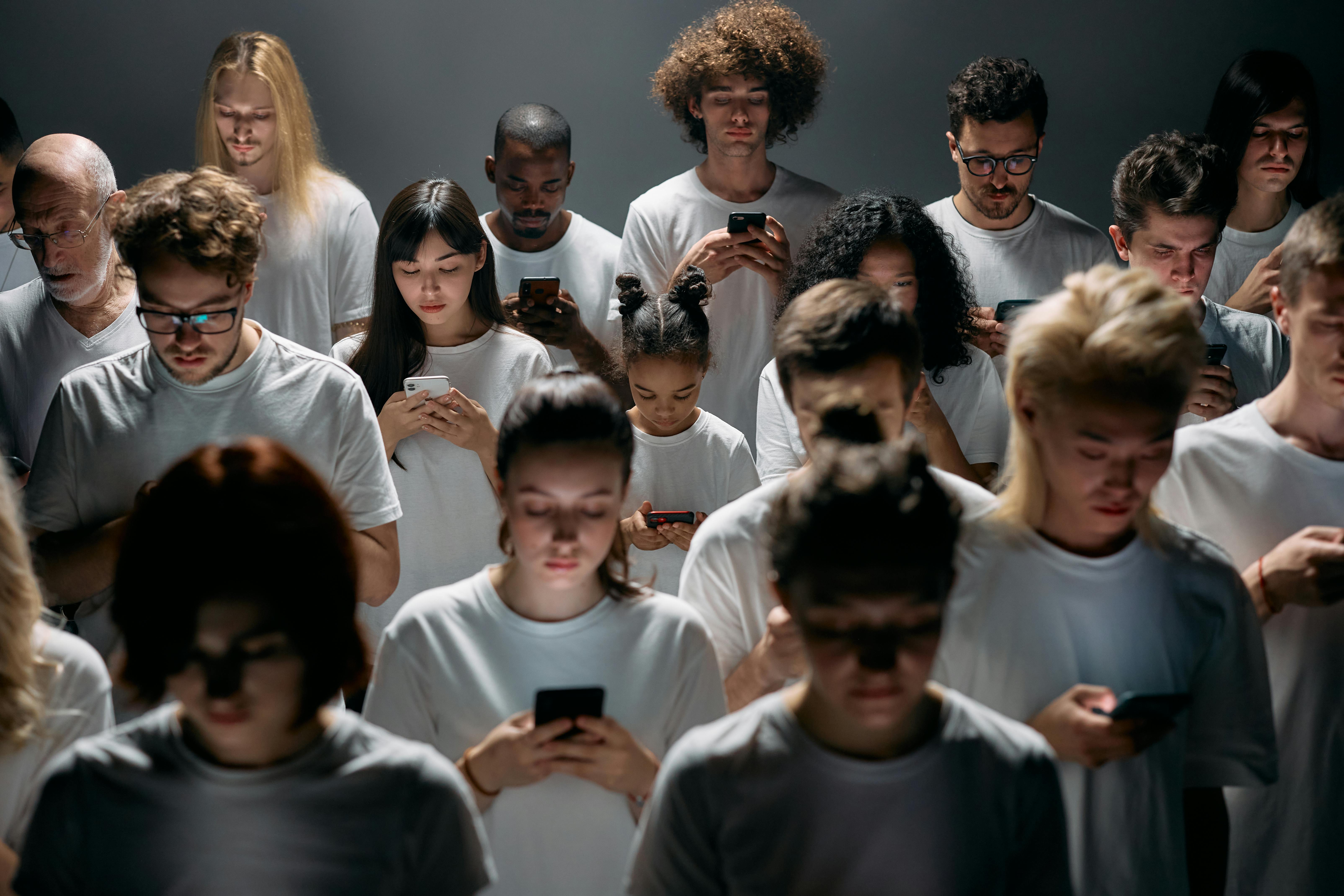In the Information Age, we have access to more knowledge and resources than ever before. With just a few clicks, we can read thousands of articles, watch countless videos, and learn about events happening across the world in real-time. But with this influx of information comes a challenge: How do we know what to trust? In a digital landscape where opinions are often presented as facts and misinformation spreads rapidly, critical thinking has become one of the most crucial skills of our time.
Research from Stanford University reveals that over 80% of students struggle to distinguish between credible and non-credible sources, often mistaking paid ads for news. This highlights how vital it is to develop critical thinking skills—not just to discern the truth but to navigate a world where misleading information can influence our beliefs, decisions, and overall worldview.
In this guide, we’ll explore what critical thinking really means, why it’s essential, and practical steps to cultivate this skill to become more discerning and empowered in today’s complex information landscape.
What is Critical Thinking? Understanding the Basics
Critical thinking is the ability to analyze information objectively, evaluating its credibility, accuracy, and relevance before drawing conclusions. It’s about asking questions, seeking evidence, and remaining open to new ideas without being easily swayed by emotion or opinion.
Core Components of Critical Thinking:
- Analysis: Breaking down information to understand its parts and their relationship to each other.
- Evaluation: Judging the credibility and reliability of sources and arguments.
- Interpretation: Making sense of data and connecting it to broader contexts.
- Reflection: Questioning one’s own beliefs and assumptions, and being open to new information.
- Skepticism: Approaching information cautiously and verifying claims rather than accepting them at face value.
In a time where digital content can range from informative to misleading, critical thinking enables us to parse through information efficiently, discerning the truth from misinterpretation, opinion, or outright falsehood.
Why is Critical Thinking More Important than Ever?
With social media, news websites, and user-generated content, information spreads quickly—whether it’s true or not. A recent study published in Science found that false information spreads six times faster on social media than accurate news. This rapid circulation can easily cloud judgment and make it difficult to know what’s real and what’s sensationalized.
The impact of lacking critical thinking skills in the Information Age is clear:
- Misinformed Decisions: Misleading information can affect choices, from health decisions to voting behavior.
- Polarization: Biased or inaccurate information fuels division by promoting extreme viewpoints, often leading to a lack of constructive dialogue.
- Loss of Trust in Institutions: When misinformation is rampant, trust in legitimate sources (like journalism, science, and education) can erode.
By developing critical thinking skills, we equip ourselves with the tools to approach information carefully, make informed choices, and communicate more effectively with others.
Practical Steps to Develop Critical Thinking in the Information Age
Enhancing critical thinking requires deliberate practice, but small, consistent actions can lead to profound improvements in how we process and evaluate information. Here are strategies to help build critical thinking skills that will allow you to navigate today’s information landscape more confidently.
1. Question the Source: Who is Behind the Information?
The first step in critical thinking is to examine the source of any information you encounter. Not all sources are created equal, and understanding where information comes from helps you assess its credibility.
How to Evaluate Sources:
- Check the Author’s Background: Research the author’s credentials, experience, and affiliation. Are they an expert in the field?
- Look at the Publication: Well-established news outlets and peer-reviewed journals tend to adhere to rigorous standards. Be cautious of sources that lack transparency or appear biased.
- Consider Funding and Interests: Ask yourself, “Who benefits from this information?” If a report or article is funded by a specific interest group, be aware that it might present a biased perspective.
Example: Before sharing a health article on social media, check if the author is a reputable medical expert or if it’s from a reliable medical publication rather than a commercial website.
2. Practice Analytical Reading: Go Beyond Headlines
Headlines are designed to grab attention, but they don’t always accurately represent the full content of an article. Analytical reading means diving into the content with an investigative mindset, asking questions and looking for evidence.
Tips for Analytical Reading:
- Read Beyond the Headline: Read the full article and compare it with other sources to get a balanced view.
- Identify the Main Argument and Evidence: Ask yourself, “What is the author trying to convince me of?” and “What evidence is provided to support their claims?”
- Look for Consistency: Does the information align with what other reliable sources are saying, or does it contradict established knowledge?
Pro Tip: Practice analytical reading by summarizing the article in your own words after reading. This ensures that you’ve fully understood the main points and haven’t been misled by a provocative headline.
3. Identify Biases: Recognize Personal and External Influences
Biases are everywhere, from the media we consume to our own subconscious leanings. Recognizing these biases is essential for developing an objective viewpoint.
How to Spot Biases:
- Look for Language Cues: Biased articles often use emotional language to evoke reactions. Words like “outrageous” or “disgraceful” can signal an attempt to manipulate rather than inform.
- Consider Opposing Views: Seek out information from multiple sources and compare perspectives, especially on divisive issues.
- Check Your Own Biases: Reflect on whether you’re gravitating toward information that confirms your preexisting beliefs. This is known as confirmation bias.
Example: If you’re reading about a political issue, check both conservative and liberal news sources. This practice helps you see where each side may omit or emphasize information to suit its narrative.
4. Evaluate Evidence: Seek Data and Studies Over Opinions
Critical thinking means distinguishing between fact and opinion. Opinions often masquerade as facts, so it’s essential to look for supporting evidence, particularly on topics related to health, science, and politics.
Tips for Evaluating Evidence:
- Look for Credible Data: Strong articles cite reputable studies or reliable statistics, rather than personal opinions or anecdotal evidence.
- Check Study Quality: Not all studies are equally reliable. Peer-reviewed studies published in reputable journals are generally more trustworthy than single studies with small sample sizes or studies funded by biased sources.
- Understand Correlation vs. Causation: Just because two things happen together doesn’t mean one caused the other. Look for explanations that differentiate between correlation (two things occurring together) and causation (one thing directly causing the other).
Example: When reading a health article that claims “coffee prevents cancer,” look for a link to a peer-reviewed study or an explanation of the mechanism, rather than accepting a sweeping statement at face value.
5. Develop Skepticism: Don’t Accept Claims Without Verification
Skepticism doesn’t mean rejecting information outright; it means approaching it thoughtfully. In the age of misinformation, skepticism can serve as a protective shield, prompting you to verify rather than accept claims instantly.
How to Practice Healthy Skepticism:
- Verify with Multiple Sources: Cross-check information with reputable outlets, such as established news agencies or fact-checking websites.
- Look for Red Flags: Be wary of headlines that sound too sensational or content that lacks citations and credible sources.
- Take Time to Reflect: When you encounter surprising or upsetting information, take a moment to process it before reacting or sharing it with others.
Statistic: According to a Pew Research Center study, 62% of Americans have encountered misinformation on social media. Practicing skepticism can help you avoid sharing inaccurate information, which contributes to the spread of misinformation.
6. Engage in Open-Minded Discussions: Test and Expand Your Views
One of the most powerful ways to strengthen critical thinking is through open dialogue. Engaging with different perspectives broadens your understanding and can reveal blind spots in your thinking.
Tips for Productive Discussions:
- Listen Actively: Focus on understanding the other person’s viewpoint without planning your rebuttal.
- Ask Questions: Try to understand the reasoning behind their beliefs, and ask for clarification if something isn’t clear.
- Stay Open to New Ideas: Critical thinking involves being open to changing your mind if new evidence or compelling arguments arise.
Example: If you’re discussing climate change with someone who has a different view, listen to their points, share your perspective with evidence, and look for common ground. You may not agree, but you’ll leave with a broader understanding of different viewpoints.
7. Embrace Lifelong Learning: Keep Your Mind Sharp
The Information Age is constantly evolving, and critical thinking is an ongoing journey. Engaging in lifelong learning keeps your mind flexible, adaptive, and open to new information.
How to Embrace Lifelong Learning:
- Read Widely: Expose yourself to diverse topics, genres, and sources to build a well-rounded perspective.
- Take Courses on Critical Thinking: Many online platforms offer courses in critical thinking, logic, and analytical reading that can sharpen your skills.
- Reflect on Past Beliefs: Take time to consider how your views have changed over time and what experiences led to those changes. This reflection helps cultivate humility and openness to growth.
Pro Tip: Make it a habit to read one book, article, or research paper each month on a topic outside your comfort zone. This helps you practice objective analysis and expands your knowledge base.
Becoming a Critical Thinker in the Information Age
Developing critical thinking skills is like building mental armor for the Information Age. It helps you navigate the world with a sense of clarity, confidence, and independence, allowing you to make informed decisions and resist manipulation. Remember that critical thinking isn’t about never being wrong; it’s about approaching information thoughtfully, asking questions, and seeking truth.
As you strengthen these skills, you’ll find that you can engage in discussions more effectively, make decisions with greater certainty, and approach the world with a discerning eye. In a time where information is plentiful but true understanding is rare, critical thinking is the tool that empowers you to navigate, evaluate, and ultimately thrive in an ever-complex world. So take each day as an opportunity to sharpen your thinking and embrace a journey toward a more thoughtful, informed life.
Improve critical thinking skills with Hapday, Your Wellbeing Assistant
Join the millions of people using Hapday. Improve overall wellness & sleep.




